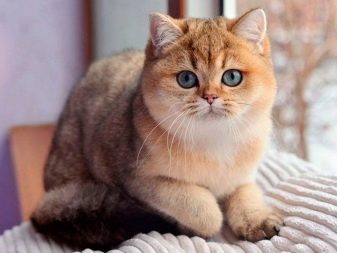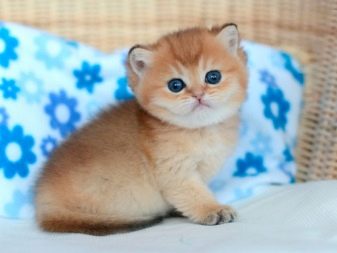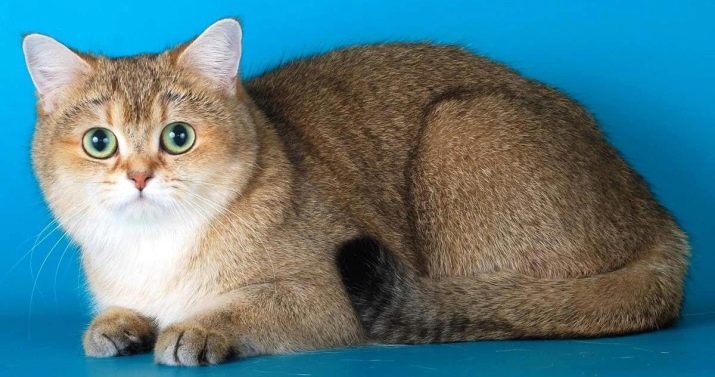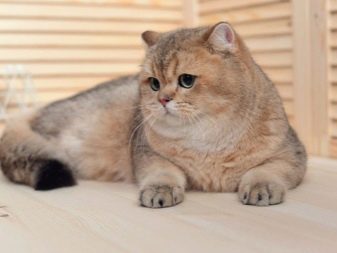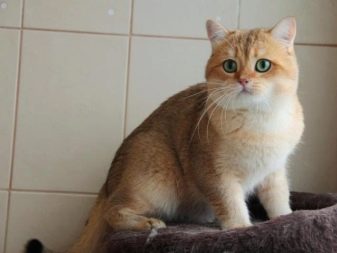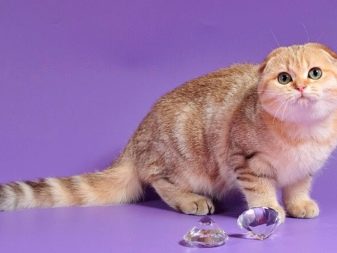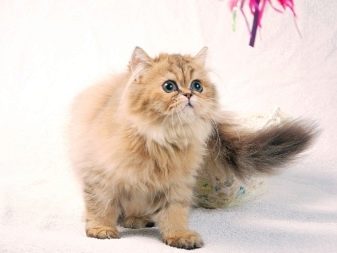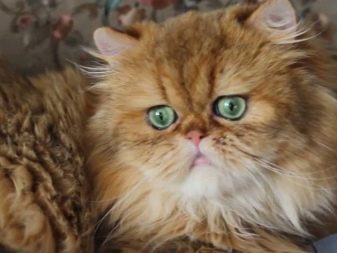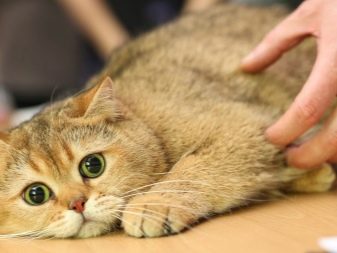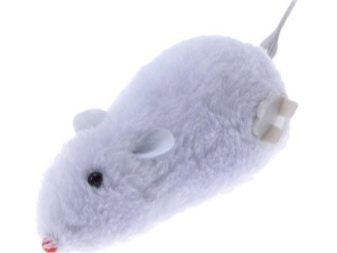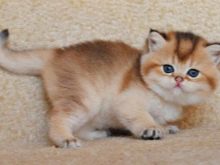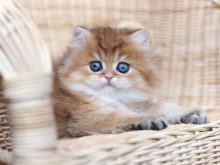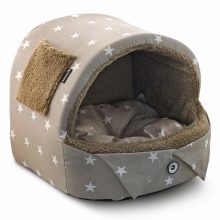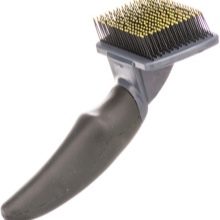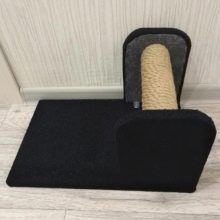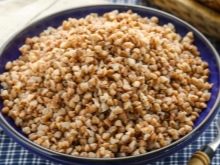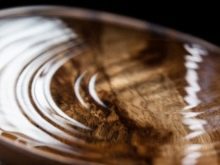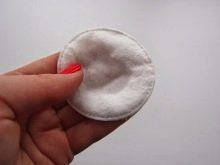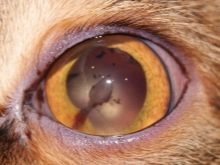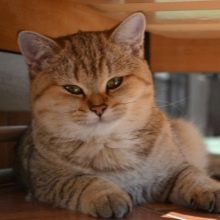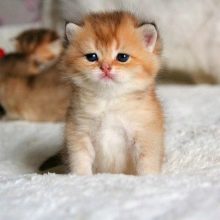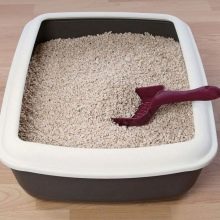Golden Chinchilla cat: characteristics, choices and conditions of detention
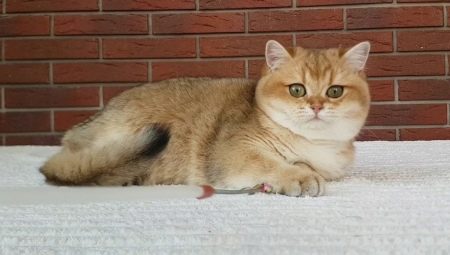
Chinchilla cats are of English origin, they were first bred artificially in the 1880s in England. The concept of "chinchilla" defines two components: color and breed. By the Chinchilla are Persian, British, Scottish breed, as well as exotic and Burma. The result of the crossing of the Persian breed with the golden gene and the British with silver color became delightfully beautiful golden chinchilla.
Description
The golden chinchilla cat breed is very beautiful and cute, when meeting with her, there is a desire to stroke her and cuddle. Wool has a characteristic golden color, although in general it is heterogeneous, and has a smooth overflow (tipping). Undercoat can range from pale apricot to golden hue. The hair on the ears, chin, chest and abdomen is red. On the head, back, sides and tail in the general golden color there is tipping of black or brown colors.
If the hairs are 1/3 dark, the color is shaded, and if the 1/8 is chinchilla. A ticked coloring is also highlighted - it is of a darker golden hue, while on each hair there is not one black stripe, but more than two.
Sometimes you can find tabby color - a mixed gold color with stripes all over the body and on the paws, with a peculiar mark on the head.
There is a color point, when the full color is hidden under the Siamese color. Cat's coat has a light golden shade, only ears, paws and muzzle look darker.
Distinctive features of the breed:
- large physique, broad chest, straight, flat back;
- short legs, having rounded pads with tufts of wool between the fingers;
- medium sized head, soft chin;
- nose is small, slightly flat, pale pink or brick-colored;
- eyes are large green or copper in color, with a dark eyeliner and slightly lowered outer corners, the color of the chinchilla point is blue;
- the tail is fluffy, short and straight;
- weight 5-7 kg.
Features gold chinchillas.
- British (English). Cats are long-haired and short-haired. Their coat is thick, shiny and thick. Ears are neat, erect, straight or rounded.
- Scottish breed There are two subtypes: Scottish Fold (lop-eared) and Scottish-Straight (usual erect ears). Wool of medium length, reminiscent to the touch plush.
- Persian. It has a long thick coat. The tail looks like a fan, very lush, the hairs of which are 2 cm longer than the hair on the body.
Character traits
Chinchillas have an excellent character, although there are differences in the behavior of different species.
- British Very calm and sociable. To communicate with the owners uses the meow and purr. He loves personal space and protests against excessive tenderness. I am pleased to let myself be ironed, but does not tolerate squeezing, it is impossible to hold it in my hands or on my knees for a long time. Cats have a well-developed intuition, they feel the role of a person in a house, and on this basis build their behavior with one or another family member.
- Scottish. Differs in kindness and peace-loving character. Very attached to the owners. If other animals live in the house (for example, a dog or birds), it gets along well with them. Loves children, loves to play outdoor games with them.Loneliness is tolerated calmly, but when the owners return home, they meet them with violent joy and follow them literally on their heels, demanding that they be stroked. Meows rarely, quietly and unobtrusively.
- Persian. Very affectionate and cheerful kitty. She loves to be the center of attention, she likes tenderness and prolonged kneeling on the hosts' knees. Prone to laziness and obesity, so you need to play with it more often. Enjoy the fun with paper wrappers and toy mice. Very capricious, with other animals in the house, gets along poorly, does not seek to establish friendly relations.
How to choose?
Choosing a golden kitten, you need to decide on the following points:
- features of the nature of which breed more impressed;
- the kitten is purchased only for an adult or for a family with a child;
- readiness for everyday care;
- Is chinchilla supposed to live with other representatives of the fauna in the house?
For adults, in whose house there are no other pets, of course, you can choose any attracted kitten on the basis of suitable characteristics and preferred color. For families with small children or other animals that are available, it is better to opt for the Scottish breed.
For families where there are children over 4-5 years old, who understand that it is impossible to squeeze the tail and forcibly hold the pet in the hands, you can have an aristocratic British woman.
Persian chinchilla is better to start those families where children have reached the age of 10, since in relation to small children she behaves wary. If suddenly the baby will persistently show attention to the cat at the moment when she is not in the mood, then she can show aggression: frightening to hiss, scratch or bite. When acquiring it is important to find out if there are vaccinations, if possible, to study documents related to the pedigree.
In addition, it should be taken into account that babies up to 3 months may be tabby in color, but as the cat or cat becomes older, it will become more uniform. Therefore, many responsible breeders do not sell kittens younger than three months of age, but give them the opportunity to spend a longer time with their mother, so that they finally form a color, a healthy mind and immunity.
Content
The main thing in the care of a cat of this breed is grooming. It needs to be washed and regularly combed. Combing has its own characteristics: You should first comb through the growth of hair, and then against the coat. To carry out this procedure for the British and Scottish cats can be every 2 weeks, as their fur is plush and springy and less prone to rolling into lumps. But the Persian chinchilla needs to be combed twice a week, in which case the wool will be smooth, there will not be tangles on it, and the cat will always have an excellent state of health.
So that pets do not spoil the owners of furniture, need to be taught from childhood to scratching. Once 2 weeks it is necessary to carefully trim one-third of the upper part of the claws, using special claws for this purpose. It is necessary to take into account the fact that of all the representatives of chinchillas the most heat-loving are Scots, if the temperature in the house drops below 20 degrees, then they immediately become uncomfortable. therefore It is important to monitor the temperature in order to prevent them from freezing, especially if the pet has to spend time alone for a long time.
It is important that a cat or a cat has its own complete place (soft bed) where you can get warm.
Besides going to work, you need to provide toys and the availability of sufficient space to move (do not leave only in one room), then the animal is easily experiencing the absence of owners at work or school. If there is a desire to walk your pet, then in the conditions of the city it would be advisable to use brackets. When a cat lives in a private house or if the family has a country plot, better walking exercise in the garden.
Nutrition
You can feed the animal with special food or natural food. From the usual food is preferable to the following products.
- Finely chopped chicken, turkey or rabbit meat. It can be boiled or raw, but scalded with boiling water. You can give daily.
- Boiled sea fish. Feed better 1-2 times a week.
- Dairy products: yogurt, kefir, low-fat cottage cheese. Give no more than 2 times a week.
- Quail eggs - 2 times a week.
- Buckwheat porridge boiled in water - 2-3 times a week.
- Bone flour. It should be used as an additive. Required dose: 1-2 teaspoons 2-3 times a week. Flour is best mixed with meat.
The following foods are prohibited for chinchillas:
- sweets (chocolate, candy, caramel);
- raw cow milk;
- smoked meat;
- pickles;
- spicy dishes.
It is important that the pet always has clean and fresh water in the bowl to quench their thirst. It is better to feed 2-3 times a day.
With natural nutrition should be given special vitamins. When using the finished feed, you can do without them, since they are already included in its composition. Properly chosen ration guarantees an excellent appearance and well-being to your pet. The coat will always be silky and shiny, and the behavior is active.
Hygiene
Chinchillas, like most cats, do not like to swim, so wash them all you need only as needed and rarely. For washing, you can use special shampoos, making sure that the foam does not get into the eyes and ears. The frequency of hygienic manipulations depends on the breed.
The British (British) are more clean, very often wash their paws and tongue. Owners only need to wipe their eyes with a cotton swab once a day, leading it from the outer corner of the eye to the nose and remove the formed lumps from them. The ears of the British beauty can be cleaned once a month with a cotton pad dipped in warm boiled water.
Persian and Scottish chinchillas need more frequent care from the owners.
Eyes should also be wiped every day, and ears should be wiped with them much more often - once a week, because of the peculiarities of the structure, they are prone to suppuration (especially in the lop-eared Scots).
Emerging contamination as necessary from the face and legs should be removed carefully with a damp cloth.
It is advisable to brush your teeth once a day, to teach this procedure as early as possible. It is much more difficult to train an adult cat for dental cleaning than a kitten. Means for cleaning the teeth can be purchased at the pet store. It is important to keep the tray clean. The choice of fillers is varied, there are those that completely absorb the smell. If the cat's toilet is always clean, the animal will always use it and never foul from it.
Possible diseases
The health of cats depends on heredity, immunity is transmitted from parents. In general, chinchillas have good health, but there may be a tendency to certain diseases.
- Retinal Atrophy - defeat of receptors sensitive to light in the retina. Symptoms include dilated pupils, eye gloss and sudden night blindness. The animal ceases to see in the dark, and in the neglected case can completely lose sight. Unfortunately, there is no effective treatment for atrophy. It is important to observe eye hygiene so that they do not accumulate contamination.
- Caries. For prevention, it is important to brush your teeth, and in case of decay of caries, immediately contact a veterinarian.
- Hypertrophied Cardiopathy - A heart disease in which its ventricular wall thickens. May lead to cat heart failure or thromboembolism. Detect possible only with ultrasound. At the onset of the disease, the animal may experience shortness of breath and fatigue. Timely diagnosis and timely treatment will ensure a favorable outcome.
- Polycystic kidney disease - A disease of the genitourinary system, in which there are cysts in the kidneys.Recognizing the manifestations of the disease at the initial stage is very difficult, but still, if it was possible, then a surgical removal of the cyst is performed. But most often, the symptoms become noticeable only when the formations are greatly enlarged, and the cat has pain. If cysts are detected by simple abdominal palpation, then the operation is meaningless. Save the animal is no longer possible, because the kidneys can not function properly. Relieve suffering can only special diet and drug therapy prescribed by a veterinarian. They will be able to extend the life of the pet.
It is very important that the cat be vaccinated against calicivirosis, rhinotracheitis, rabies and cat distemper according to the schedule. The first vaccinations occur at the age of 1.5 - 2 months, repeated in 3 months and further throughout life, inoculated 1 time per year.
Breeding
Breeding golden chinchillas is not a simple matter, even for experienced breeders. The main difficulty - the key to obtaining the desired color. Partner is not easy to select. If plans only breeding, without participation in exhibitions, then you can pair a pet with an individual of the opposite sex of any chinchilla breed with silver or gold color. If participation in exhibitions is important, then selection of an ideal pair is necessary. It must be a purebred cat of the same breed and color as the cat.
The first age for mating cats comes in about one and a half years. It can be carried out immediately with the appearance of estrus. The interval between the matings must be at least 4 months. After mating chinchilla sleeps a lot. With the onset of pregnancy, the tummy becomes noticeable after about a month, and its duration is 9 weeks.
If the pet has a kitten with a pedigree, then after one and a half month it is necessary to contact a special club or organization that will reveal the pedigree of the kids and give out special passports for them. This will serve as a kind of permission for the official legal sale of kittens. The price for breed kittens is different, varies from 10,000 to 40,000 rubles, the clearer the kitten and the closer to the standards, the more expensive its price. More expensive are the Scottish and British gold chinchillas, Persian are somewhat cheaper.
Owner reviews
Reviews of gold chinchilla varied. Contradictions, to a greater extent, are connected with the peculiarities of character. The main thing is that it corresponds to the nature of the owners. Difficult care for a cat or a cat of the Persian breed because of the long wool, prone to molting. Many owners pay attention to the excessive cleanliness of chinchillas, so the tray filler, especially when training a kitten to it, is recommended to be changed after each visit to the toilet. In general, the bright color, pleasant coat, tenderness, playfulness of the cat and its easy adaptation to the new place of residence, of course, give pleasant emotions to the owners.
Read more about the care and maintenance of gold chinchillas at home described in the video below.
